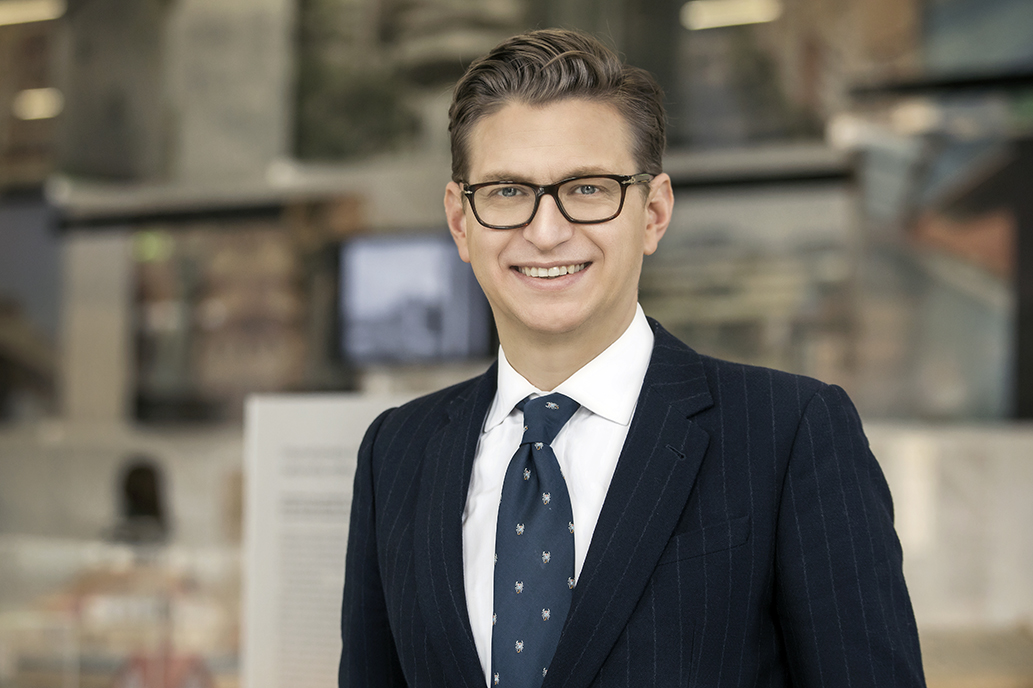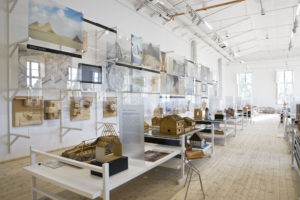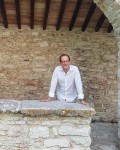Keeper of the Department at the Victoria and Albert Museum in London, tutor at the Royal College of Art, assistant director to David Chipperfield at the 2012 Venice Architecture Biennale, architecture critic and television presenter for the BBC. From April 18th he will be the new Director of Stockholm’s ArkDes and we interviewed him
—
«Kieran Long is an internationally renowned leader in the field of architecture and design. The fact that he wants to lead ArkDes is a recognition of both this national centre and Sweden’s strong position in the sector. This is a very good start to a year that will continue to strengthen the role of culture in building our society», says Minister for Culture and Democracy Ms Bah Kuhnke.
Kieran Long has an extensive experience in the field of architecture and design, museums and exhibitions. Since 2013 he has been Keeper of the Department Design, Architecture and Digital at the Victoria and Albert Museum in London, and has previously worked as assistant director to David Chipperfield at the 2012 Venice Architecture Biennale and as a tutor at the Royal College of Art. He has been an architecture critic for several publications and a television presenter for the BBC since 2009.
I met Kieran in London few days before his transfer to Stockholm to take his position at ArkDes.
From London to Stockholm, Kieran’s enthusiasm and energy, as well as his cv, are certainly a good starting point for a delicate role. ArkDes has a prestigious history, has been a leading institution for many years in the field of architecture museums, it has one of the most important design and architecture collections in the world.
—
Kieran, you have successfully worked for one of the most important museums in the world, V&A. What was your role, which aims and dreams you had, and what are the results?
My aim at the V&A was to help this institution to understand its potentials and define its identity related to contemporary design and architecture and the debate about civic institutions. There is a rigid and well organised departmental structure there that is arranged according to materials (as Fashion, Photographs, Textiles, Paintings, Jewellery, Ceramics etc.). I felt that in covering contemporary design, we needed a different approach. I established an entirely new department collecting new fields of design, able to cut across some of departmental divisions. Our approach was not defined by material boundaries, but by a broad interest in the relationship of design at all scales to public life. This was articulated most clearly in our project “Rapid Response Collecting”, that brought objects in to the V&A and focused contemporary questions of globalisation, urbanisation, surveillance, mobile technology and many other themes.
I also worked on major exhibitions (including “Engineering the World: Ove Arup” and the “Philosophy of Total Design” in 2016, “All of This Belongs to You” in 2015 and forthcoming projects about the future of design and videogames). This approach, defining a clear thematic orientation of “Design and Public Life” was successful, I think, and I leave behind a brilliant team ready to take that work forward.
—
ArkDes, the former Museum of Swedish Architecture, has been a pioneering institution for contemporary architecture together with the Finnish Museum of Architecture in Helsinki. How do you see its new mission under your appointment?
Moving to Stockholm I will take some time to enter into the debate, and to understand the history of such an important institution. I have a brief to give ArkDes a more international outlook and profile, as well as fulfil its mission to be a national platform for architecture and design.
I am so excited to have the opportunity to direct ArkDes and I believe I can continue the work I started at the V&A with the ArkDes team, looking at the relationships of design (in its broadest sense) to public life. Sweden has one of the world’s great design cultures, and ArkDes has the potential to become a European centre for the studies of cities and the exhibition of architecture and design. It has an amazing position in Rafael Moneo’s building on the historic island of Skeppsholmen in the centre of Stockholm, it has a huge collection of the history of Swedish architecture (including the Lewerentz and Asplund archives and many more riches), two beautiful exhibition spaces in historic buildings, a library and archive service, and one of Europe’s greatest modern art museums as a neighbour: Moderna Museet. ArkDes also has the unique position of combining its museum function with a role as the government-appointed place for debate and research about the future of Swedish cities, architecture and design. This policy role is vital as Sweden begins a house building boom and as the Swedish government prepares a bill on architecture and design this autumn. The bedrock of all of these debates is our amazing collection, our library and our expertise in architecture. But on that architectural foundation, we will examine the full breadth of design practice as it relates to building future cities.
I think that ArkDes can be an exciting platform for experimentation, to investigate completely new fields of design which will not be in other museums or institutions in Sweden, particularly in digital fields of design. I have in mind that we must both exhibit extraordinary works of architecture and design, and celebrate them, but also make space for radical new readings of the contexts of design practice today. I also hope there will be lots of room for collaboration with Moderna Museet.
—
What are your relations with Italy and with Italian architectural culture, after your experience at the Venice arch biennale?
The Venice Biennale is the most important institution for architecture, a place to discuss the most serious questions about architecture, a place to have fun as well. My experience with David Chipperfield in the 13. Mostra Internazionale di Architettura – Common Ground – was extraordinary. ArkDes should make its collections available to the curators of Biennale, our expertise should be available. ArkDes also has the responsibility to play our part in the cooperation with Norwegian and Finnish colleagues on the Nordic Pavilion.
I’d like to invite Italian researchers and thinkers to cooperate with ArkDes, to be involved in thinking about the collections and also discuss contemporary questions on urbanism and architecture. Sweden is experiencing a major housing boom, and we need to ask where is the qualities will be in those areas and neighbooors. The question of immigration is a delicate and important one. We face many of these questions in common across Europe, and we need to built networks between research groups, and share expertise
—


























